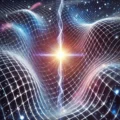Current Beliefs
The Charge Admittance model introduces Standardized Earth Electromagnetic Parameters (SEEP) as a conceptual framework for defining a universal reference point in electromagnetism. SEEP anchors fundamental constants such as the vacuum permittivity ε0, μ0, and the speed of light (c), to a specific altitude above Earth’s surface. By standardizing environmental conditions, SEEP enhances the calibration, interpretation, and cross-comparison of electromagnetic measurements across diverse settings, offering an adaptable yet precise foundation for scientific inquiry.
Speed of Light and Gravity
The speed of light (c) is a cornerstone of modern physics, defined as the maximum speed at which information or energy can travel through space. Einstein’s theory of relativity maintains that c is constant in a vacuum, independent of gravity or the observer’s motion. However, general relativity predicts slight variations in observed electromagnetic phenomena due to gravitational effects.
The Pound-Rebka experiment (1959) demonstrated this principle by measuring the frequency shift of gamma rays in Earth’s gravitational field. Gamma rays traveling upwards against gravity exhibited a redshift (energy loss), while those moving downwards displayed a blueshift (energy gain). Although the experiment validated general relativity’s prediction, it underscored the difficulty of distinguishing whether this effect stems from changes in the speed of light or the energy of the waves themselves. Crucially, Earth-bound experiments cannot isolate these two interpretations entirely.
NOTE: There is no earthbound method capable of differentiating between the two conclusions.
SEEP as a Reference Standard
SEEP provides a systematic reference for aligning experimental conditions in electromagnetism. By defining a standard altitude and environmental baseline, SEEP enables:
Consistent measurement calibration, ensuring uniformity across experiments and locations.
Enhanced accuracy in interpreting data, particularly when environmental variations (e.g., gravitational effects, atmospheric interference) may skew results.
Improved comparability of results from experiments conducted under different spatial and temporal conditions.
The integration of SEEP also emphasizes the interplay between fundamental constants and environmental variables, such as gravity and atmospheric density. For example, the framework facilitates adjustments for observed shifts in electromagnetic wave behavior due to gravitational time dilation or redshift.
Lunar Timekeeping and Relativity
The 2024 initiative by the White House to establish a lunar time standard highlights the practical importance of frameworks like SEEP. Lunar timekeeping presents unique challenges due to the competing effects of gravity and motion:
Relativistic Effects: Clocks on the Moon tick faster than those on Earth due to weaker lunar gravity but slower due to the Moon’s relative motion. The net result is a 56-microsecond-per-day drift relative to Earth time. Patla and Ashby of the National Institute of Standards and Technology (NIST) refined these calculations, demonstrating a net 56-microsecond-per-day drift between lunar and Earth clocks.
Navigation and Communication: This drift, while seemingly minor, becomes significant for missions requiring precise synchronization, such as navigation and communication between Earth and the Moon.
Patla and Ashby’s refinement of these calculations demonstrates how relativity shapes our understanding of time and electromagnetic propagation in varying gravitational contexts. SEEP offers a robust platform for incorporating such adjustments into Earth-based reference systems and extending them to extraterrestrial environments.
Implications of SEEP
The establishment of SEEP as a universal calibration framework extends its benefits to fields ranging from astrophysics to space exploration:
Gravitational Calibration: SEEP allows for systematic corrections of redshift in gravitational gradients, refining measurements from observatories or satellite systems.
Atomic Clock Precision: By standardizing references for electromagnetic resonators used in atomic clocks, SEEP ensures consistency even under varying gravitational influences.
Lunar and Extraterrestrial Applications: SEEP provides a foundation for extending Earth-based standards to new environments, such as the Moon, Mars, or beyond.
Benefits of SEEP
The advantages of SEEP are transformative across scientific and practical domains:
Precision: It delivers a stable reference for calibrating electromagnetic measurements.
Consistency: By unifying standards across experimental setups, SEEP facilitates reproducibility and comparability.
Accuracy: SEEP mitigates the influence of environmental variations, ensuring reliable interpretations of data.
Versatility: Adaptable to different spatial contexts, SEEP supports diverse scientific objectives.
Standardization: It fosters coherence by referencing constants against a consistent Earth-based baseline.
SEEP also underscores the nuanced relationship between constants like 𝑐 and their observational contexts, offering a clearer framework to incorporate relativistic effects into electromagnetic theory.
SEEP as a Refinement Tool
The application of SEEP-referenced numbers to refine General Relativity is analogous to equipping an advanced telescope with state-of-the-art optics. It sharpens our understanding of the universe by reconciling theoretical principles with empirical observations, correcting for environmental biases, and refining the interpretation of redshift, time dilation, and gravitational interactions. This integrated perspective bridges the gap between Earth-bound measurements and extraterrestrial contexts, fostering groundbreaking insights into the fundamental structure of space-time.
In a world poised for lunar bases and interplanetary exploration, SEEP exemplifies the forward-thinking framework necessary to advance human understanding and capability, ensuring both scientific precision and practical applicability.
